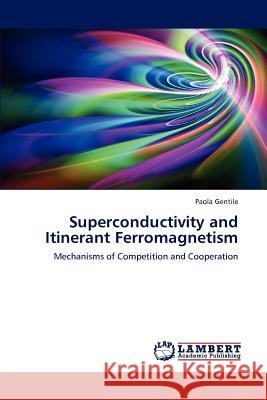Superconductivity and Itinerant Ferromagnetism » książka
Superconductivity and Itinerant Ferromagnetism
ISBN-13: 9783659148385 / Angielski / Miękka / 2012 / 208 str.
Superconductivity and ferromagnetism are long-range orders coming both from a spontaneous symmetry breaking: the U(1) symmetry for spin-singlet superconductivity, and the SU(2) one for ferromagnetism. Although they are traditionally considered antagonistic phenomena, experimental results have shown that their coexistence can be realized in uniform systems, like for instance in the heavy fermions metals UGe2 and URhGe, and the rutheno-cuprate compounds like GdSr2RuCu2O8. This Monograph provides an overview of the interaction mechanisms between these two orders, focusing in particular on the case of singlet superconductivity and itinerant ferromagnetism. Experimental evidences and original results derived within theoretical proposals that capture the general features of the coexistence state are reported. The intriguing effects rising from the interplay of these two phenomena and the conditions favoring their coexistence and their possible cooperation are discussed within two different scenarios: when the two orders arise from the same electrons (like in UGe2 and URhGe), and when they exist in separate electron bands and strongly interact each other (like in GdSr2RuCu2O8).
Superconductivity and ferromagnetism are long-range orders coming both from a spontaneous symmetry breaking: the U(1) symmetry for spin-singlet superconductivity, and the SU(2) one for ferromagnetism. Although they are traditionally considered antagonistic phenomena, experimental results have shown that their coexistence can be realized in uniform systems, like for instance in the heavy fermions metals UGe2 and URhGe, and the rutheno-cuprate compounds like GdSr2RuCu2O8. This Monograph provides an overview of the interaction mechanisms between these two orders, focusing in particular on the case of singlet superconductivity and itinerant ferromagnetism. Experimental evidences and original results derived within theoretical proposals that capture the general features of the coexistence state are reported. The intriguing effects rising from the interplay of these two phenomena and the conditions favoring their coexistence and their possible cooperation are discussed within two different scenarios: when the two orders arise from the same electrons (like in UGe2 and URhGe), and when they exist in separate electron bands and strongly interact each other (like in GdSr2RuCu2O8).











